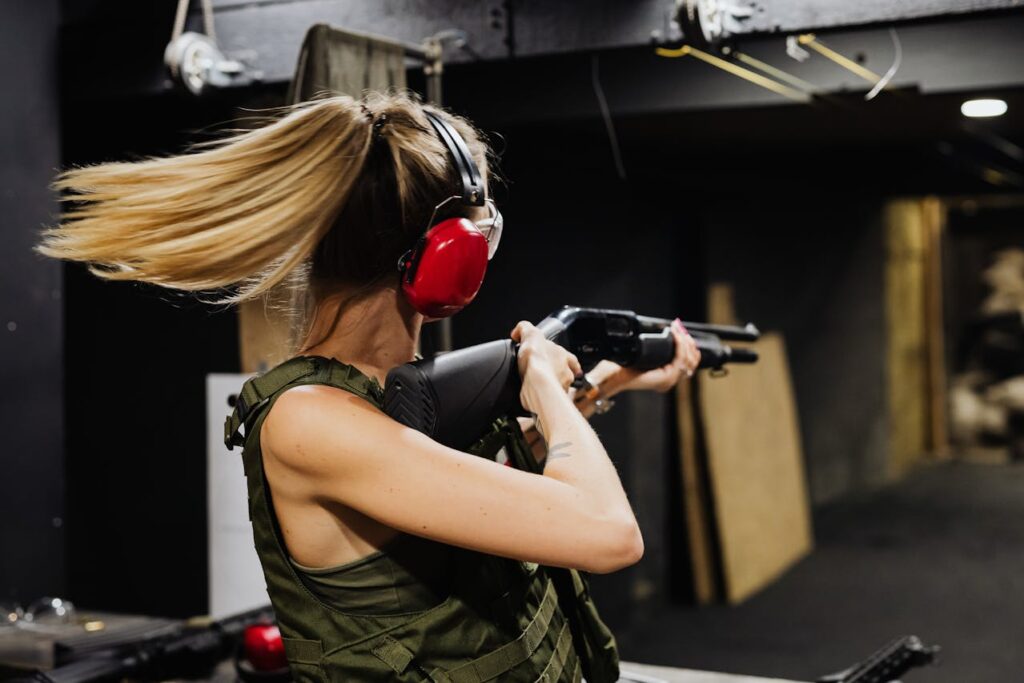
Whether shooting for fun, hunting, or self-defense, accuracy is essential. Acquiring accuracy at the shooting range necessitates not just aptitude but also appropriate equipment and methods. Recent developments in technology have greatly improved the accuracy and training methods used by shooters. This article looks at seven ways that technology might improve your accuracy at the range.
Advanced Optics and Sights
The advancement of sophisticated sights and optics is one of the technologies that have the most influence on increasing accuracy. Even at greater range, shooters can aim more precisely because of modern scopes and red dot sights. More control over the shot is made possible by features like parallax correction, variable zoom, and lighted reticles. With the increased target acquisition and decreased error margin provided by these optics, shooters will find it simpler to strike their mark on a regular basis.
Laser Training Systems
Dry-fire practice has been transformed by laser training devices, which allow shooters to increase their accuracy without using live ammo. These devices employ a laser that projects a visible dot onto a target when the weapon is fired. The shooter receives fast feedback on their technique since they can see where the shot would have landed. A lot of firearms training systems come with software or applications that track the location of shots, enabling thorough analysis and ongoing development.
Ballistic Calculators and Apps
Ballistic calculators and applications have emerged as vital resources for shooters who want to maximize their accuracy. To determine the trajectory of a shot, these computational instruments consider a number of variables, including elevation, wind speed, barrel length, and kind of bullet. Shooters can forecast where their bullet will land by entering the pertinent data and adjusting their aim appropriately. This degree of accuracy is especially helpful when shooting at long range, as even little errors in judgment might cause a target to be missed.
High-Tech Rangefinders
Although hunters and sharpshooters have traditionally used rangefinders to determine distances to targets, contemporary rangefinders go one step further. These gadgets, which come with digital screens and laser technology, measure distances extremely accurately, even in difficult situations. Aside from providing further information, certain sophisticated rangefinders can estimate wind direction and compensate for angle, which enables shooters to make better judgments before firing. Shot accuracy can be greatly increased by using rangefinders, which offer accurate distance readings.
Smart Targets
Shooting practice has advanced significantly with the use of smart targets. These targets have sensors installed that can identify bullet impacts and offer immediate shot placement feedback. Shooters can analyze their performance over time and pinpoint areas for improvement by connecting some smart targets to smartphone applications. Smart targets assist shooters improve their accuracy and technique by providing fast, accurate feedback.
Digital Scoring Systems
On shooting ranges, digital scoring systems are becoming more and more common because they provide an automatic and precise means of monitoring shot performance. These systems eliminate the need for manual scoring and lower the risk of human mistakes by using cameras and sensors to identify shots and calculate scores. Digital scoring systems gather data, which can be examined to reveal information about a shooter’s precision, reliability, and overall performance. For competitive hunters who need to monitor their progress and make data-driven adjustments, this technology is very helpful.
Virtual Reality (VR) Training
A new technology called virtual reality (VR) training is revolutionizing the way shooters train and increase their accuracy. Users can train in realistic situations without leaving the gun range thanks to virtual reality (VR) equipment that replicates a variety of shooting scenarios. These models can imitate various terrain, weather, and lighting situations, offering a thorough training experience. Instant feedback on shot placement is another feature of VR training that helps shooters improve their accuracy in a safe, immersive environment.
Conclusion
Technology has completely changed how shooters practice and advance their accuracy at the range. With the help of technological advancements like virtual reality, smart targets, and laser training systems, shooters can now attain higher levels of accuracy. The potential to improve shooting accuracy will only grow as technology advances, providing shooters of all skill levels with novel and thrilling options.


